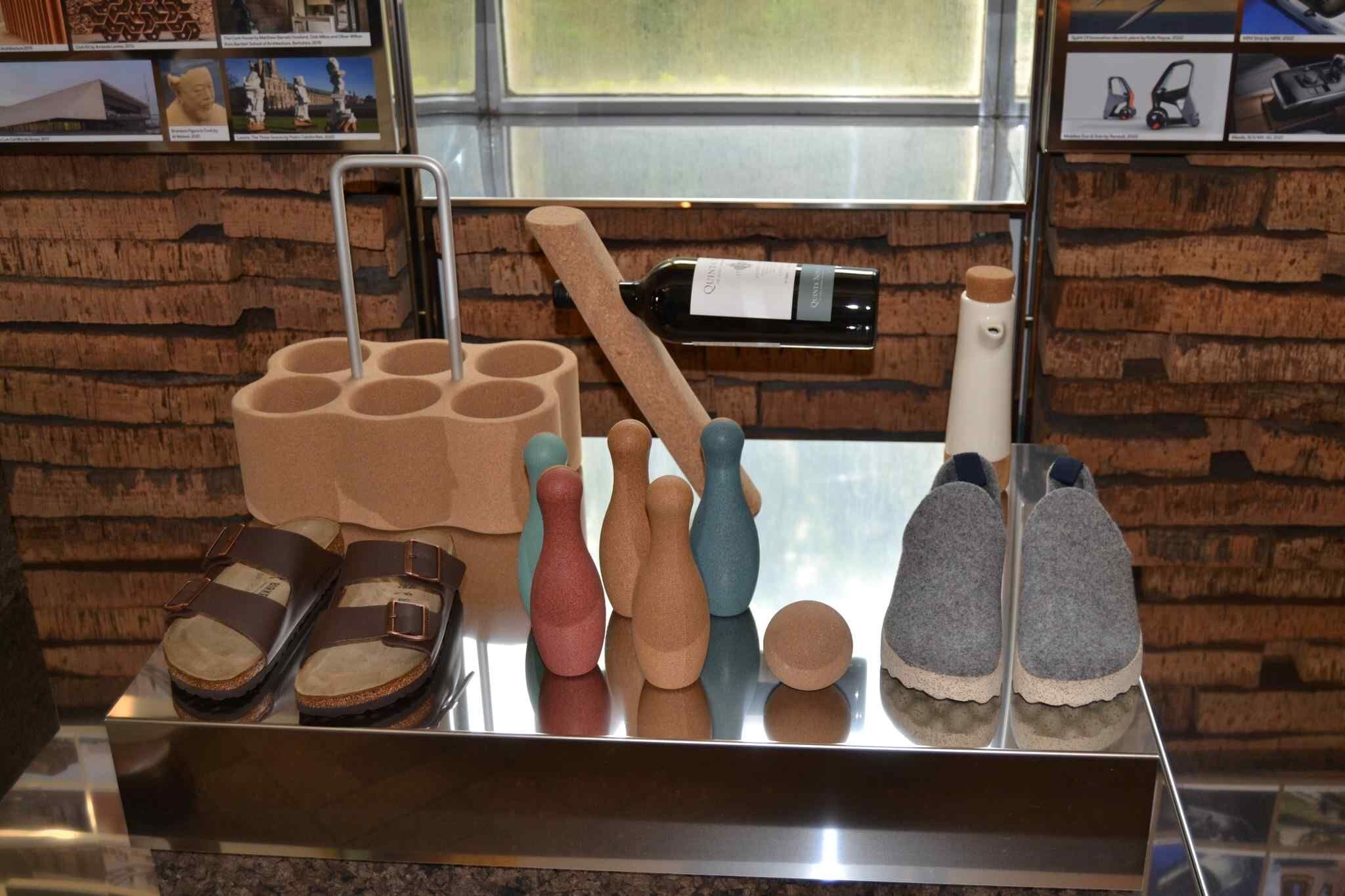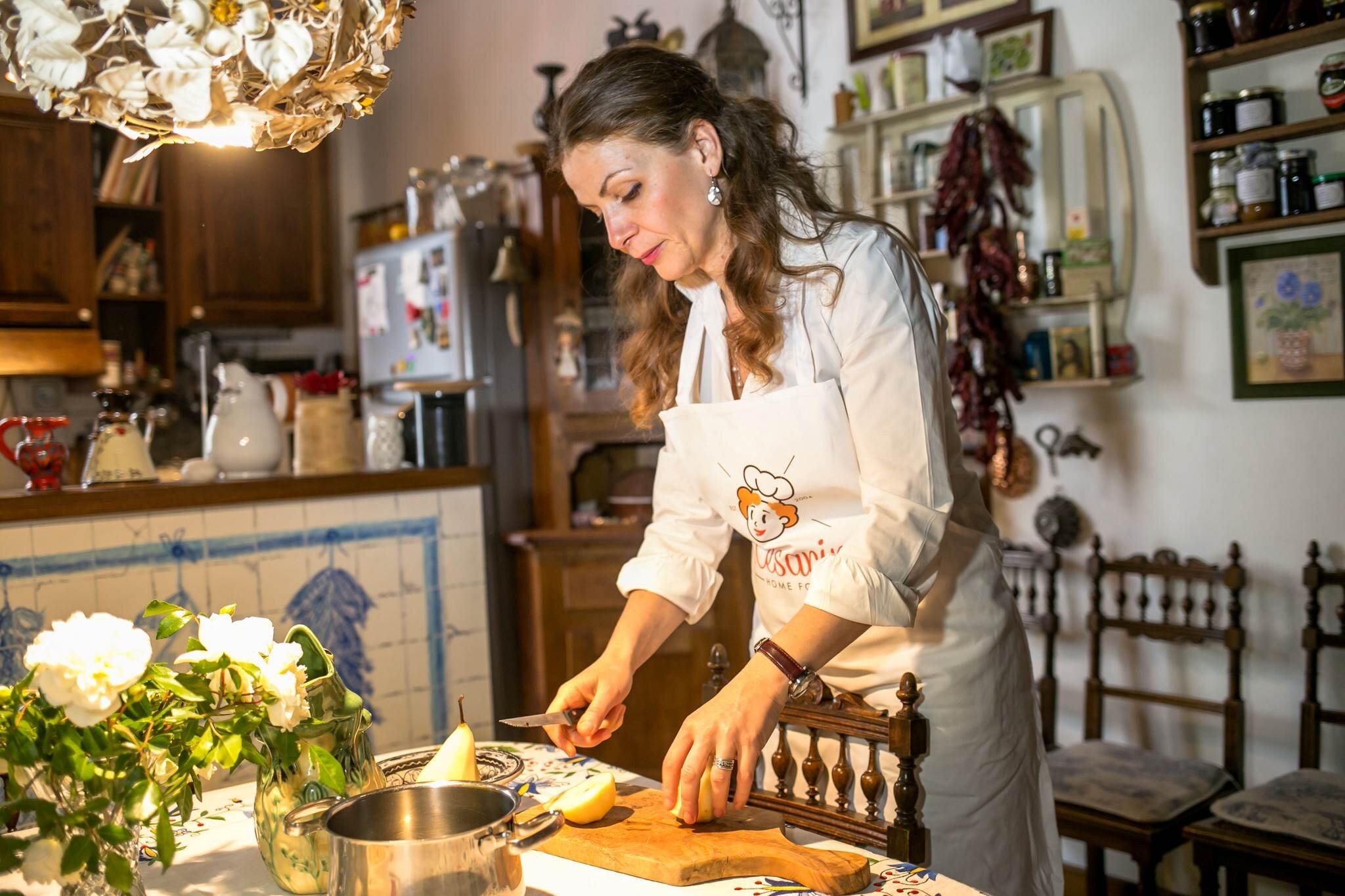
Il vino non è mai solo una bevanda. Spesso, per tutti quelli che se ne sono innamorati, è il medium che ispira e favorisce la dimensione del viaggio verso luoghi che, può capitare, rimangano per sempre luoghi dell’anima.
Per dirla con Pessoa: i viaggi sono i viaggiatori, ciò che vediamo non è ciò che vediamo, ma quello che siamo.
Alentejo, regione del Portogallo, distretto di Évora, foresta di Rio Frìo, proprietà del Gruppo Amorim – la prima azienda al mondo nella produzione di tappi da sughero.
Prima di arrivarci si attraversa una sorta di villaggio abbandonato, dal fascino messicano. Uomini lavorano alla decortica della quercia da sughero: eccolo, il privilegio del viaggiatore. Eccolo, un luogo ancestrale, di selvaggia bellezza, che ti entra nell’anima per sempre.
Perché il vino, oltre ad essere terroir, vigna, uva, cantina, bottiglia, packaging, è anche tappo.
Negli ultimi anni si è fatto, e si fa, un gran parlare su quale sia il migliore sistema di tappatura per mantenere la bottiglia integra. Visioni e scelte personali degli enologi e delle cantine hanno portato a preferire l’uno o l’altro sistema: sughero, tappo a vite, vetro, materiali plastici (ormai non più sostenibili). E diciamolo francamente: nessuno ha la verità in tasca.
Resta il fatto che il sughero naturale monopezzo, essendo materia viva come il vino, mantiene un fascino inconfutabile.
Ma come si arriva dalla corteccia della sughera alla bottiglia? Il percorso è davvero affascinante: bisogna essere votati all’arte della pazienza. Tutto inizia con la decortica.
Viaggio tra le querce da sughero dell’Alentejo, con Amorim
Tra le querce dell’Alentejo, nel cuore verde del Portogallo, si compie ogni estate un rito antico: la decortica. È il gesto con cui si rimuove la corteccia della sughera, dando inizio a un lungo percorso che porterà alla nascita di un tappo.
Siamo in una delle aree più incontaminate e affascinanti del Mediterraneo, un vero santuario della biodiversità. Qui, ogni nove anni, le querce vengono “tosate” con cura da uomini che maneggiano solo un’accetta e una grande conoscenza tramandata di padre in figlio. È un lavoro lento e prezioso, che rispetta i tempi della natura e protegge l’ambiente dall’abbandono e dalla desertificazione.
Ci vogliono quasi 45 anni dalla nascita di una quercia per ottenere il primo sughero adatto alla produzione di tappi. E una pianta può vivere anche due secoli: è un ciclo virtuoso, che guarda al futuro con pazienza.
Così il sughero viene preparato per diventare tappo
Una volta raccolto, il sughero viene trasportato nei centri Amorim. Viene accatastato all’aria aperta, su pavimenti drenanti, al riparo da pioggia e umidità, e lasciato stagionare per sei mesi. È un passaggio fondamentale per mantenerne intatti profumo e struttura.
Il trattamento continua con bollitura e vaporizzazione: due fasi che servono a eliminare impurità e possibili contaminazioni, in modo naturale, senza agenti chimici. Il sughero viene immerso in acqua calda e poi sottoposto a vapore a 135°C. Il tutto con un’attenzione costante all’ambiente: l’acqua viene filtrata e riutilizzata, e ogni processo è ottimizzato per ridurre al minimo l’impatto.
L’arte di creare tappi, tra tecnica e bellezza
Terminata la fase di trattamento, il sughero viene selezionato e lavorato. I tappi “monopezzo”, ricavati da un unico segmento, sono destinati ai grandi vini da invecchiamento. Quelli “tecnici”, ottenuti da granina riassemblata, sono pensati per vini di pronta beva.
In ogni caso, nulla è lasciato al caso: ogni tappo viene lavato, levigato, lubrificato e personalizzato, anche con incisioni o marchi su richiesta delle cantine. Un dettaglio tecnico, sì, ma anche estetico e identitario.
E c’è un numero che racconta meglio di qualsiasi parola quanto il sughero sia un materiale sostenibile: per ogni tonnellata estratta, 73 tonnellate di CO₂ vengono catturate. Un primato mondiale per l’ambiente.
Il progetto ETICO e la seconda vita del sughero
Da oltre dieci anni, Amorim raccoglie tappi usati grazie al progetto ETICO, nato in collaborazione con associazioni no profit italiane. I tappi vengono trasformati in nuova materia prima e le onlus ricevono contributi economici per i propri progetti sociali.
Dal recupero dei tappi è nata SUBER, la prima collezione di oggetti di design in sughero riciclato. Il materiale che un tempo chiudeva una bottiglia oggi diventa complemento d’arredo, oggetto d’arte, simbolo di un’economia circolare reale.
Nel frattempo, Amorim ha già piantato oltre 1,5 milioni di nuove querce in foreste storiche per combattere il cambiamento climatico e garantire un futuro al tappo in sughero.
La bellezza del vino nella terra del Dão - Quinta da Taboadella
Da custodi del vino, i Amorim sono diventati anche produttori. La famiglia possiede oggi 127 ettari nei territori più vocati del Portogallo, tra il Douro e il Dão.
Nel Dão, la tenuta Quinta da Taboadella è un luogo incantato: 42 ettari di vigneti immersi nei boschi, in un paesaggio che unisce storia romana, bellezza paesaggistica e architettura contemporanea.
La cantina è firmata dall’architetto Carlos Castanheira: 2500 m² costruiti con legno e sughero, pensati per dialogare con il paesaggio, la luce, il silenzio. Una perfetta armonia tra estetica e funzionalità.
Casa Villae 1255, con otto camere affacciate sulla Serra da Estrela, è il luogo perfetto per chi cerca un’esperienza di soggiorno intima, elegante e immersiva. Quinta da Taboadella è la prima cantina del Dão a entrare nella prestigiosa famiglia Relais & Châteaux.
Un mondo che parte da un tappo e arriva lontano
Amorim non è solo l’azienda leader nei tappi da sughero. È una storia che intreccia foreste e mani sapienti, gesti lenti e scelte visionarie. È un ecosistema dove il vino incontra la natura, la tecnica si fa bellezza e la sostenibilità diventa pratica quotidiana.
In un piccolo oggetto spesso dimenticato, si conserva un legame invisibile tra la terra e chi la ascolta. E forse proprio lì, tra il silenzio del sughero e il respiro di una bottiglia chiusa, si nasconde il suono profondo del tempo.
Amorim and the Art of the Cork: A Journey Through the Cork Oaks of Portugal
Wine is never just a drink. For those who have fallen in love with it, it often becomes a medium—an invitation to travel towards places that sometimes remain, forever, places of the soul.
To quote Pessoa: “Travel is the travelers. What we see is not what we see, but what we are.”
Alentejo, Portugal. Évora district. Rio Frio forest. A property of the Amorim Group—the world’s leading cork stopper producer.
Before you arrive, you pass through what looks like an abandoned village, with a certain Mexican charm. Men are at work stripping cork bark from the trees: this is the traveler’s privilege. This is an ancestral place, wild and beautiful, that leaves a permanent trace on the soul.
Because wine, beyond terroir, vineyard, grapes, winery, bottle, and packaging, is also cork.
In recent years, there’s been much debate about which bottle closure best preserves a wine. Winemakers and producers have made personal and often diverging choices: natural cork, screw caps, glass closures, and even plastic (now widely deemed unsustainable).
Let’s be honest—no one holds the absolute truth.
Still, the single-piece natural cork—being a living material like wine—retains an undeniable charm.
From cork oak to bottle: a story of patience
How does cork bark become a bottle stopper? The journey is fascinating, requiring a true devotion to the art of patience. It all begins with the cork harvest.
A journey among the cork oaks of Alentejo, with Amorim
In the Alentejo region, in the green heart of Portugal, an ancient ritual takes place each summer: the descorcha, or cork harvest. It is the delicate act of removing bark from the cork oak, starting the long process that leads to the birth of a stopper.
This is one of the most pristine and biologically rich areas in the Mediterranean—a true sanctuary of biodiversity. Here, every nine years, the trees are “shorn” by skilled hands wielding nothing but an axe and inherited wisdom passed from father to son. It is a slow and precious craft, in harmony with nature’s rhythms and a powerful ally against land abandonment and desertification.
It takes nearly 45 years for a cork oak to yield its first bark suitable for stopper production. And the tree itself can live up to 200 years. It’s a virtuous cycle—an act of care that looks far ahead.
Preparing cork to become a stopper
Once harvested, the cork is brought to Amorim’s facilities. It is stacked outdoors on sloped, draining platforms, sheltered from rain and humidity, and left to season for six months—a crucial step to preserve its fragrance and structure.
Next come boiling and steaming: two key stages that naturally eliminate impurities and potential contaminants, without chemical agents. The cork is immersed in hot water, then steamed at 135°C. Throughout the process, environmental impact is minimized: water is filtered and reused, and each step is optimized for sustainability.
The art of crafting stoppers: between technique and beauty
After treatment, the cork is selected and processed. Single-piece stoppers—cut from one solid section—are reserved for fine, age-worthy wines. Technical stoppers—made from granulated and reassembled cork—are designed for wines meant to be enjoyed young.
In both cases, nothing is left to chance. Each stopper is washed, sanded, lubricated, and customized—sometimes engraved or branded per the winery’s request. A technical detail, yes—but also one of identity and aesthetics.
And there is one number that speaks louder than words about cork’s sustainability: for every ton of cork harvested, 73 tons of CO₂ are captured. A world-leading figure for the environment.
The ETICO project and the second life of cork
For over a decade, Amorim has been collecting used corks through the ETICO project, created in collaboration with Italian non-profit organizations. The corks are transformed into new raw material, while the charities receive funding for their social programs.
From this recycling initiative came SUBER, the first design collection made from recycled cork. A material once used to seal a bottle now becomes furniture, artwork, and a symbol of a truly circular economy.
Meanwhile, Amorim has planted over 1.5 million new cork oaks in historic forests to fight climate change and secure a future for cork stoppers.
The beauty of wine in the land of Dão – Quinta da Taboadella
From wine custodians, the Amorim family has also become producers. Today, they own 127 hectares in some of Portugal’s most prized wine regions, including the Douro and Dão.
In Dão, Quinta da Taboadella is a magical place: 42 hectares of vineyards nestled among woodlands, where Roman history, natural beauty, and contemporary architecture meet.
The winery, designed by architect Carlos Castanheira, spans 2,500 m² and is built with wood and cork, in harmony with the landscape, light, and silence. A perfect balance of form and function.
Casa Villae 1255, with eight rooms overlooking the Serra da Estrela, offers an intimate, refined, and immersive stay. Quinta da Taboadella is the first Dão winery to join the prestigious Relais & Châteaux family.
A world that starts with a cork
and tells so much more
Amorim is not just the global leader in cork stoppers. It is a story woven from forests and skilled hands, slow gestures and visionary choices. An ecosystem where wine meets nature, technique becomes beauty, and sustainability becomes a daily practice.
Within this small, often overlooked object, lies an invisible thread connecting the land to those who truly listen. And perhaps it is there—between the silence of cork and the breath of a sealed bottle—that the deep sound of time resides.









